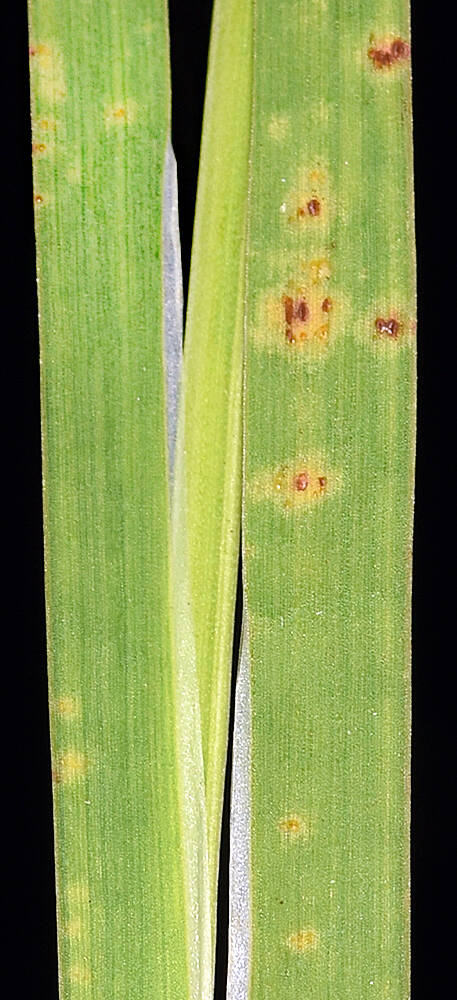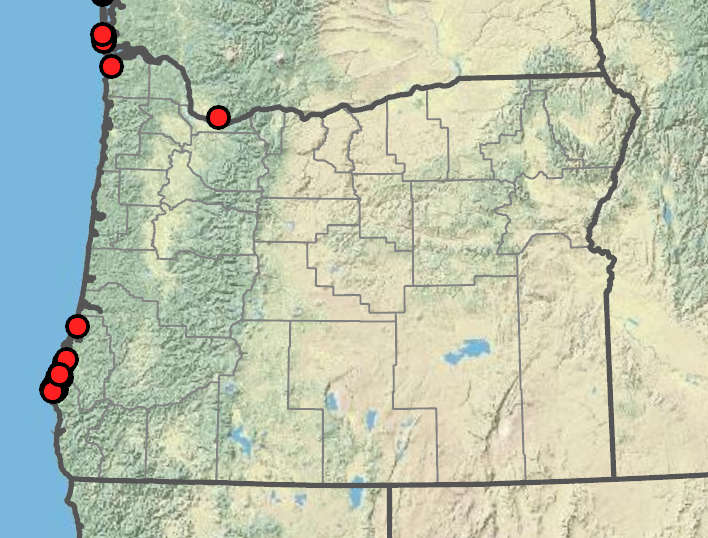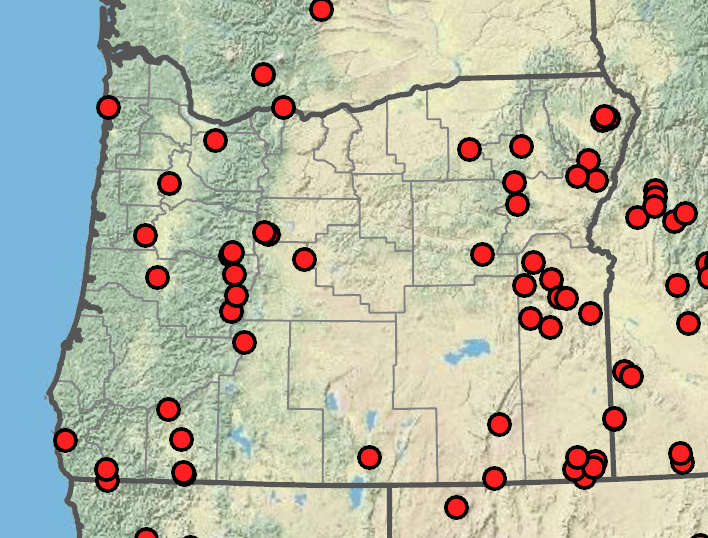Juncus canadensis
Juncus saximontanus
Canada rush, Canadian rush
Rocky Mountain rush
basal and cauline; round; hollow, septate, 1–2 mm wide;
auricles 1–1.2 mm.
flat; iris-like, blue-green, partially septate;
auricles 0–1.2 mm.
panicles of 3–50 clusters; clusters 5–50-flowered, not obscured by inflorescence bract.
(2)10–20 clusters; clusters 4–25-flowered.
tepals 6, green; reddish, or pale brown;
tips acuminate;
stamens 3;
filaments 0.8–1.5 mm;
anthers 0.3–0.5 mm;
styles 0.2–0.3 mm.
tepals 6, often green (red) to medium brown (dark brown);
stamens usually 6;
filaments 0.6–1.1 mm;
anthers 0.4–0.9 mm;
style 0.4–0.9 mm.
usually 0–1 mm longer than the tepals, dark brown, 1-chambered.
shorter than to longer than the tepals, brown to dark brown or blackish, obtuse or acute, 1-chambered.
narrowly ellipsoid to linear, 1.25–1.9 × 0.2–0.25 mm;
bodies 0.5– 0.8 mm; tails 0.3–0.5 mm, 0.5–1 times as long as seed body.
0.4–0.5 × 0.25–0.3 mm, apiculate, reticulate.
=80.
Juncus canadensis
Juncus saximontanus
Shores, ponds, peatlands, disturbed sandy acidic wet ground, cranberry farms, ditches. 0–100 m. Est. WA; north to British Columbia; eastern North America; Europe, New Zealand. Exotic.
This species was introduced by cranberry agriculture and is spreading into natural wetlands. Some authors suggest rare flowers have 6 stamens.
Shores, creek banks, springs, swales, peatlands, ditches. 100– 2500m. BW, Casc, ECas, Lava, Sisk, WV. CA, ID, NV, WA; north to AK, northeast to Manitoba, southeast to TX, south to Mexico. Native.
Juncus saximontanus has six stamens per flower and is usually found east of the Cascade Range. It is weakly separated from J. ensifolius, which has three stamens per flower. Tepal color, inflorescence shape, and style length are unreliable means to separate them. A few plants have three to six stamens and are of uncertain status, perhaps representing hybrids.
Peter Zika
Peter Zika
- Local floras:
BC,
OR,
WA
- Local Web sites:
Flora NW,
PNW Herbaria
WildflowerSearch
iNaturalist (observations)
USDA Plants Database
- LBJ Wildflower Center
- SEINet
- Plants of the World Online
- Encyclopedia of Life
- Wikipedia
- Google Image Search
- Local floras:
BC,
CA,
OR,
WA
- Local Web sites:
CalFlora,
CalPhotos,
Flora NW,
PNW Herbaria
WildflowerSearch
iNaturalist (observations)
USDA Plants Database
- LBJ Wildflower Center
- SEINet
- Plants of the World Online
- Encyclopedia of Life
- Wikipedia
- Google Image Search


